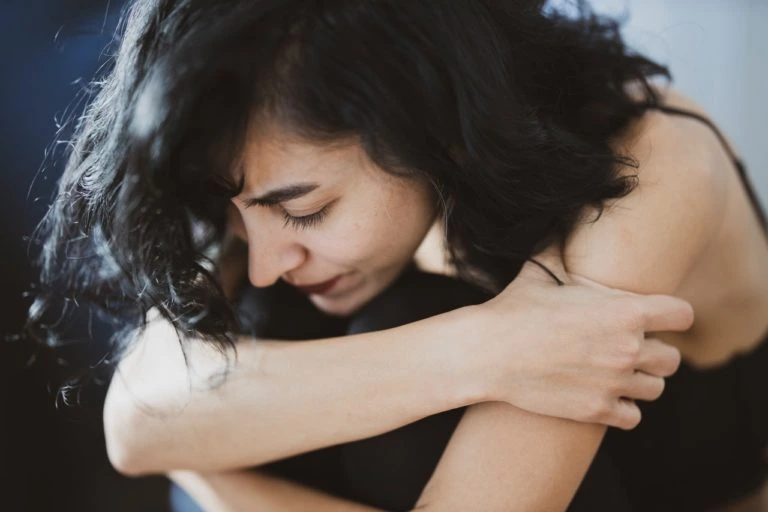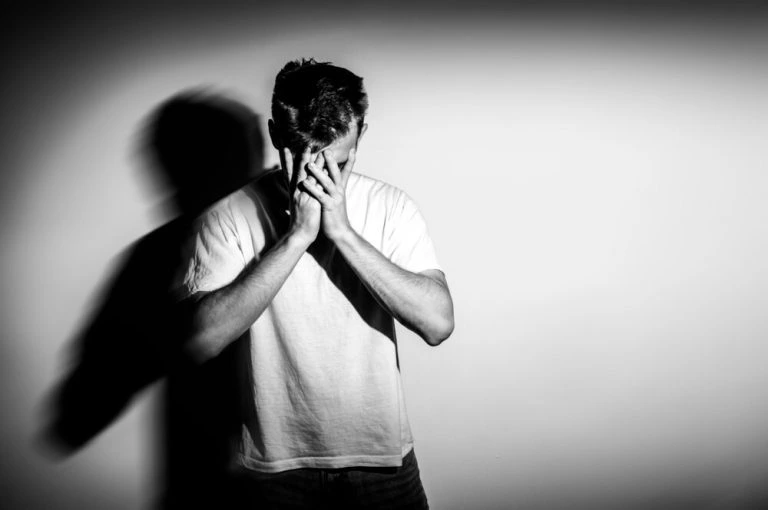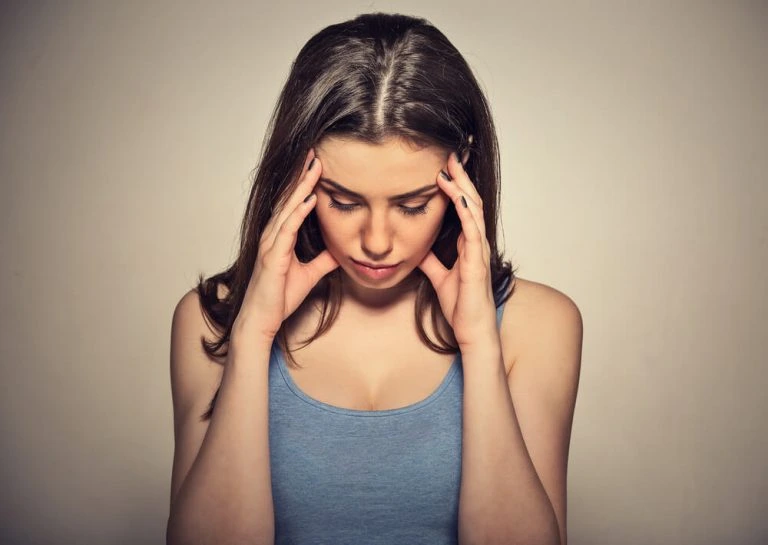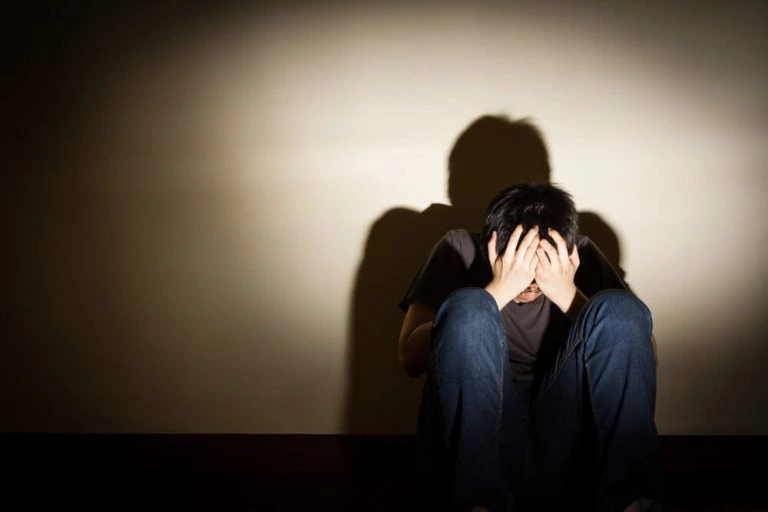Anxiety Symptoms in Women
Everyone has felt anxiety or worry at some point in their lives. But for those who live with an anxiety disorder, their experience can be distressing and debilitating. Nearly 3 in 10 adults living in the U.S. have an anxiety disorder, with nearly twice as many women struggling with an anxiety disorder than men.

Women often get diagnosed with an anxiety disorder, such as generalized anxiety disorder, panic disorder, agoraphobia, social anxiety disorder, or specific phobia, when their anxiety symptoms begin to negatively impact their daily lives and functioning. While anxiety takes on different forms and has a variety of causes, thankfully treatment options are available for women with an anxiety disorder to help improve their mental health.
Symptoms of Anxiety in Women
Many different conditions fall under the umbrella of anxiety disorders, and each condition is characterized by a set of vastly different anxiety symptoms. As such, anxiety symptoms in women can present differently in different women and range from mild to severe. One woman’s anxiety may resemble excessive worry about things that haven’t happened yet while another woman’s anxiety may be related to a specific phobia, such as flying.
The important thing to remember is that it’s normal to worry or feel stressed about various things throughout your life, such as making an important life decision, taking a big test, interviewing for a job, or making a large purchase. But anxiety disorders go far beyond typical worry or concern. A woman with an anxiety disorder may experience symptoms that interfere with daily life activities, such as job performance, marriage, parenting, or schoolwork.
Symptoms of Generalized Anxiety Disorder
Women with a generalized anxiety disorder (GAD) tend to excessively worry about many different aspects of their life, such as work, relationships, health, social interactions, and more. The symptoms of generalized anxiety disorder in women include:
- Irritability
- Difficulty concentrating
- Restlessness
- Excessive fatigue
- Muscle tension
- Difficulty controlling anxious feelings
- Sleep difficulties
Women with generalized anxiety disorder experience these symptoms most days, for at least six months.
Panic Disorder Symptoms
A woman with panic disorder may not experience excessive worry on a daily basis like with generalized anxiety disorder, but rather, she will experience repeated panic attacks. Panic attacks come on suddenly and are characterized by intense fear. Some women may experience panic attacks seemingly out of nowhere while others may have a panic attack brought on by a specific trigger, such as a situation or object.
Symptoms of a panic attack in women may include:
- Feeling out of control
- Feelings of doom
- Shortness of breath
- Choking feeling
- Shaking or trembling
- Rapid heart rate
- Heart palpitations
- Excessive sweating
Women with panic disorder may spend a significant amount of time worrying about when the next panic attack may occur. They may also try to avoid panic attacks by avoiding known triggers.
Symptoms of a Specific Phobia
There are several types of phobia-related disorders. A specific phobia involves a severe and debilitating fear of a specific situation or object. Some common specific phobias women may experience include:
- Blood
- Needles
- Spiders
- Snakes
- Dogs
- Heights
- Flying
Women with a phobia have a serious aversion to their specific phobia and often will do anything they can to avoid it. One important feature of a specific phobia is that the fear associated with the object or situation is not appropriate to the situation—conversely, it is typical to be intensely afraid of dangerous situations.
Social Anxiety Symptoms
Social anxiety is a type of phobia-related disorder and involves fear or aversion to social situations. Women with social anxiety may experience an intense worry about how others may judge them or evaluate them, and this may keep them from interacting with people they do know, as well as avoiding meeting new people. Women with social anxiety may also feel embarrassed and try to avoid social situations, such as parties, work gatherings, or events at school.
Social anxiety symptoms in women when they are in social situations include:
- Nausea
- Excessive sweating
- Trembling
- Rapid heart rate
- Avoiding eye contact
- Stiff body posture
- Avoid talking to people
- Feel awkward or embarrassed
- Feel their mind go blank
- Feel extremely self-conscious
Agoraphobia Symptoms
Agoraphobia is a type of phobia-related disorder. Women with agoraphobia are intensely afraid of two or more of the following:2
- Being in open spaces
- Being in enclosed spaces
- Standing in line
- Being in a crowd
- Using public transportation
- Being outside of home alone
Contrary to popular belief, not all women with agoraphobia are entirely housebound, although in severe cases, they may be. Anxiety symptoms in women with agoraphobia often include avoidance of these situations out of fear of having a panic attack or other humiliating symptoms.If they do happen to find themselves in an unwanted situation, the symptoms of agoraphobia resemble those of a panic attack, including:
- Dizziness
- Trembling
- Difficulty swallowing
- Chest pain
- Sweating
- Feeling faint
- Ringing in the ears
- Diarrhea
- Rapid heartbeat and breathing
Separation Anxiety Disorder Symptoms
Many people may think that separation anxiety is only something that occurs in children, but it actually commonly occurs in adulthood as well. Women with separation anxiety disorder are intensely afraid of being away from those they are attached to, like a spouse, close friend, or family member. They often have severe anxiety about the prospect of this person being harmed or even killed while they are separated from them. Because of this intense fear, they tend to have an aversion to being separated from the person they’re attached to. They often experience nightmares related to separation anxiety and may also experience physical panic symptoms when they are separated.
Post-Traumatic Stress Disorder Symptoms
While post-traumatic stress disorder (PTSD) was once categorized as an anxiety disorder and certainly shares some features with anxiety disorders, it is now considered a psychiatric disorder under “trauma and stress-related disorders” in the Diagnostic and Statistical Manual of Mental Disorders, Fifth Edition (DSM-5).That said, it is closely related to anxiety disorders and may share some symptoms with them.
Women with PTSD develop this disorder after experiencing a terrifying or dangerous event. While many people may think of veterans when they think of PTSD, it’s important to know that anyone can develop PTSD after a traumatic event. Women may develop PTSD after experiencing a sexual or physical assault, physical, emotional, or sexual abuse, a natural disaster, a terrorist attack, an accident, witnessing a death, or other traumatic events.
PTSD symptoms typically emerge within three months after the incident, although they can sometimes take longer to appear. To be diagnosed with PTSD, symptoms must persist for longer than one month and they must be debilitating enough to negatively affect several aspects of a woman’s daily life, such as work, home obligations, school, and more.
A woman with PTSD may demonstrate all of the following signs for at least one month:
- At least two cognition and mood symptoms
- At least two arousal and reactivity symptoms
- At least one avoidance symptom
- At least one re-experiencing symptom
Cognition and Mood Symptoms
- Difficulty feeling happiness or satisfaction
- Social isolation
- Loss of interest in previously enjoyed hobbies
- Ongoing negative emotions, such as shame, guilt, anger, or fear
- Self-blame related to the incident
- Negative thoughts about oneself or the world
- Difficulty remembering important aspects of the traumatic event
Arousal and Reactivity Symptoms
- Engaging in reckless or risky behaviors
- Experiencing angry outbursts
- Feeling irritable
- Experiencing sleep problems
- Experiencing problems concentrating
- Feeling tense
- Being easily startled
Avoidance Symptoms
- Avoiding feelings or thoughts related to the traumatic event
- Avoiding events, objects, or places that are reminders of the event
Re-experiencing Symptoms
- Physical signs of stress
- Upsetting thoughts
- Reoccurring dreams or memories related to the traumatic event
- Flashbacks, involving reliving the event, along with physical anxiety symptoms like sweating and rapid heartbeat
Obsessive-Compulsive Disorder Symptoms
Like PTSD, Obsessive-compulsive disorder (OCD) was once considered to be an anxiety disorder, but it now falls under “trauma and stress-related disorders” in the DSM-5. However, there is some overlap between OCD symptoms and anxiety symptoms in women.
Women with OCD experience uncontrollable, reoccurring thoughts or mental images that cause anxiety and/or behaviors that she feels compelled to repeat.
OCD symptoms related to obsessions include:
- Making sure things are symmetrical or in perfect order
- Experiencing aggressive thoughts toward herself or others
- Experiencing unwanted or taboo thoughts related to harm, religion, sex, or beyond
- Feeling extreme fear of contamination or germs
Women with OCD may have compulsions, which include repeating certain behaviors in response to an obsessive thought or urge or mental image. Compulsions may include:
- Compulsive counting
- Repeatedly checking to make sure the oven is turned off or the door is locked
- Arranging and rearranging things in a particular way
- Excessive handwashing or cleaning
Women with OCD are unable to control these thoughts or compulsions, even when they recognize that they are problematic or harmful. They also don’t derive any pleasure from these behaviors or rituals, although they may feel temporary anxiety relief.
Causes of Anxiety Disorders
Some women may have a higher risk of developing an anxiety disorder than others. There are both environmental and genetic risk factors that contribute to the development of an anxiety disorder, such as panic disorder or generalized anxiety disorder.The risk factors for each type of disorder may vary, but some general anxiety risk factors include:
- Parents or family members with an anxiety disorder or other mental illness like depression
- Medical problems, such as thyroid problems
- Experiencing negative or stressful events in early childhood
- Having a shy temperament
- Experiencing behavioral inhibition in childhood
- Low self-esteem
- Childhood sexual abuse
- Disturbed family environment
Treatment for Women with Anxiety
Anxiety is typically treated with a combination of anti-anxiety medications or antidepressants and psychotherapy, although every woman is different and requires a different course of treatment. Common therapies used to treat anxiety in women include:
- Cognitive-behavioral therapy (CBT): In CBT, a therapist helps women with anxiety understand the connection between their thoughts, feelings, and behaviors, so they can learn to change them and replace them with more positive alternatives. CBT can also help women learn social skills that will help them manage their social anxiety.
- Exposure therapy: Exposure therapy involves confronting the fears and anxieties related to the anxiety disorder to help them engage in activities or situations they typically avoid. It’s often used in conjunction with relaxation exercises.
- Cognitive therapy: Cognitive therapy involves identifying, challenging, and then counteracting delusional or troubling thoughts related to anxiety disorders.
Medication doesn’t so much cure anxiety disorders as it treats the symptoms related to an anxiety disorder. Common medications for anxiety disorders include:
- Antidepressants: Antidepressants, such as selective serotonin re-uptake inhibitors (SSRIs) like Zoloft, Prozac, and Lexapro, can help manage and reduce the symptoms of anxiety.
- Anti-anxiety medications: Anti-anxiety medications, such as benzodiazepines like Xanax and Klonopin, are prescribed to treat panic attacks. They aren’t intended to be taken every day but rather, as needed, when a panic attack occurs. Benzodiazepines have a high potential for misuse and addiction so it’s important to take them exactly as prescribed and to avoid taking them on a long-term basis.
- Beta–blockers: Beta-blockers are typically used to treat high blood pressure, but they can also alleviate symptoms of anxiety in women, such as heart palpitations, blushing, trembling, and rapid heartbeat. They may be used as needed, much like the benzodiazepines.
Anxiety and Substance Abuse in Women: Dual Diagnosis Treatment
An anxiety disorder and substance addiction frequently co-occur in women, making it even more difficult to recover from each condition. In fact, co-occurring anxiety and substance use disorder, commonly referred to as “dual diagnosis,” is often associated with more severe symptoms of each, more significant impairment in many areas of life, and more severe course of illness than either condition on its own.
An anxiety disorder and substance addiction often fuel one another and create an uncontrollable cycle of substance use. Some women with anxiety may self-medicate their unwanted symptoms with drugs or alcohol, whereas other women may develop anxiety symptoms due to alcohol addiction or drug abuse. Moreover, some women may develop both conditions by chance or as a result of common anxiety and addiction risk factors.
Co-occurring anxiety and addiction require a specialized dual diagnosis treatment program that provides comprehensive treatment designed to fully address all of the issues related to substance abuse and anxiety.
A quality dual diagnosis treatment program includes:
- Intake assessment
- Individualized treatment plans
- Integrated anxiety and substance abuse therapies
- Medications
- Ongoing assessment
- Adjustments to treatment plan, if necessary
- Experience treating anxiety and substance abuse
- Licensed and credentialed staff members
If you are looking for a dual diagnosis treatment center that can treat your anxiety and alcohol or drug addiction, call our 24/7 helpline at (800) 429-7690. Our treatment advisors can help you find a dual diagnosis program that’s right for you.






